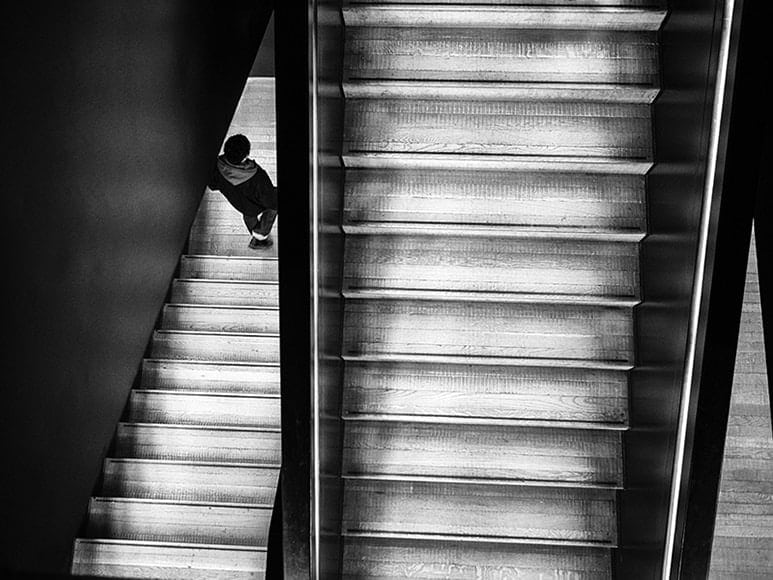Rupert Vandervell









I choose to use a mirrorless camera like the Olympus OM-D E-M5. It’s fast, small enough to conceal, lightweight and has easy to use controls.
It feels beautiful in the hands and I love the retro design. I use it almost exclusively, it’s a wonderful workhorse too and has never let me down.
I preset the fn1 and fn2 buttons to manual focus and AEL lock. This gives me the option of pre-focusing and exposing if I find myself in quick grab situation where time taken is critical.
Using a micro four thirds camera like the OMD means I can use small lenses that add very little to the overall weight.
The two lenses I choose to carry with me are exceptional in every way.
The Lumix 20mm f/1.7 is a super little lens. It’s very quick to focus even in low light conditions and the only lens I use for my night shoots.
In ideal daylight conditions, I mostly use it stopped down to f/16 and it proves itself every time with very clean, sharp images.
I love the 45mm f/1.8 for the same reasons but I generally use it for a closer portrait or to capture something where my presence would adversely effect the image.
It’s super quick changing between the two which is good because I don’t really want to have to carry two bodies around with me.
I like to get as much right in camera to avoid having to spend too much time on the computer afterwards.
Both these lenses deliver excellent results and I haven’t seen anything yet that I would want tom replace them with.
Making pictures is, for me, an aesthetic reaction to living in the city. Using the light, shadow, geometry and human presence of a single moment, I can create an image that will last forever. I want to bring out my personality in the pictures. They allow me to create order and form out of my responses to what I encounter on the streets of London and on my travels.
In pure photographic terms, it’s always about the light and how it affects a scene. With the different times of day come different moods. I like how cool and clear the light can be in the morning, creating sharp lines of shadow and jewel-like highlights. It penetrates the space between the towering buildings and generates a dazzling display of intricate patterns on every surface.
In the late afternoon the light becomes warm and subtle and the shadows grow feathered and deep.
When the sun begins to go down, its rays catch the humans moving through the long, soft shadows.
Sometimes a geometric heaven of shapes and forms becomes apparent, all neatly arranged.
At other times an assortment of objects — street furniture, signs, road markings — creates something more abstract.
The important thing for me as a street photographer is how comfortable the camera feels in my hands and how quickly I can get it into action. I want to be as anonymous as I can. I want to blend in with the crowds or lurk in the shadows.
I certainly don’t want to be advertising myself with a large DSLR, a big bag and assorted paraphernalia attracting attention to myself shouting, “Here I am, it’s picture time!”
Stealth is key to getting the best shots. Anticipate the moment, get into position, click and go.


Check out these 8 essential tools to help you succeed as a professional photographer.
Includes limited-time discounts.













